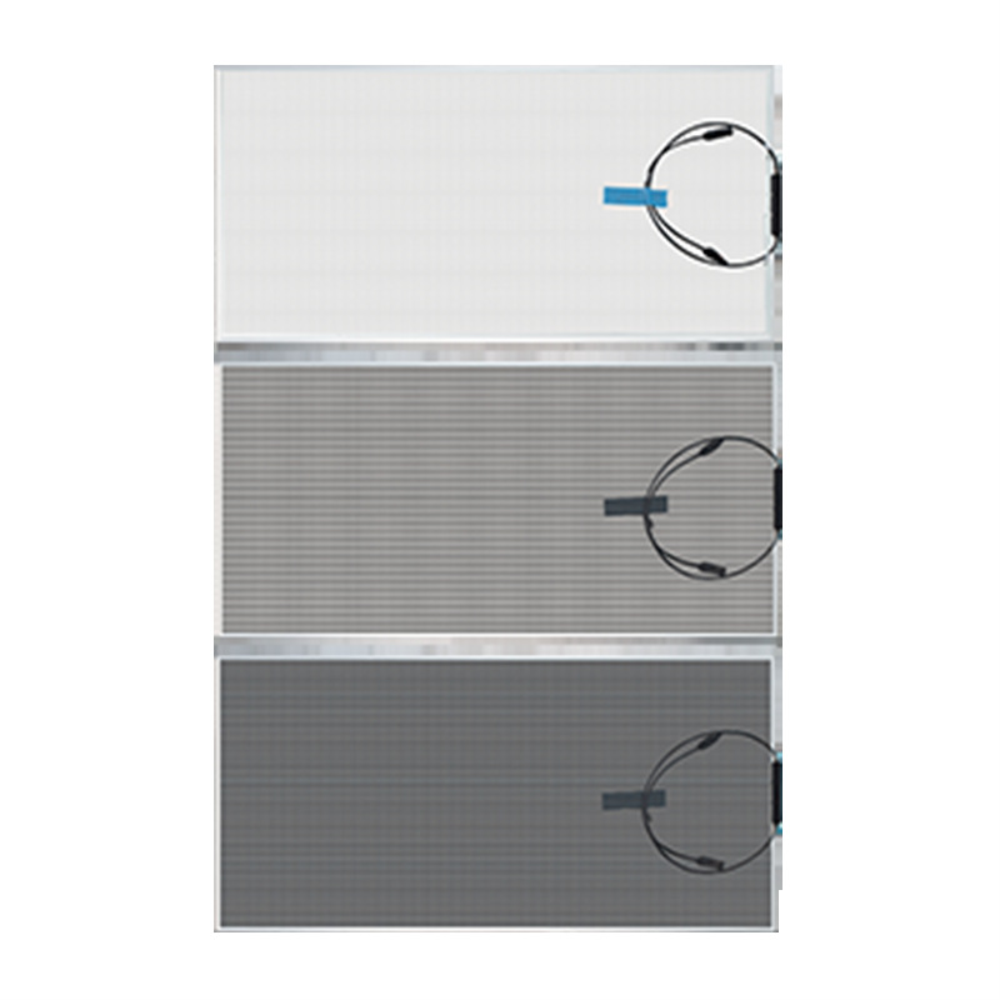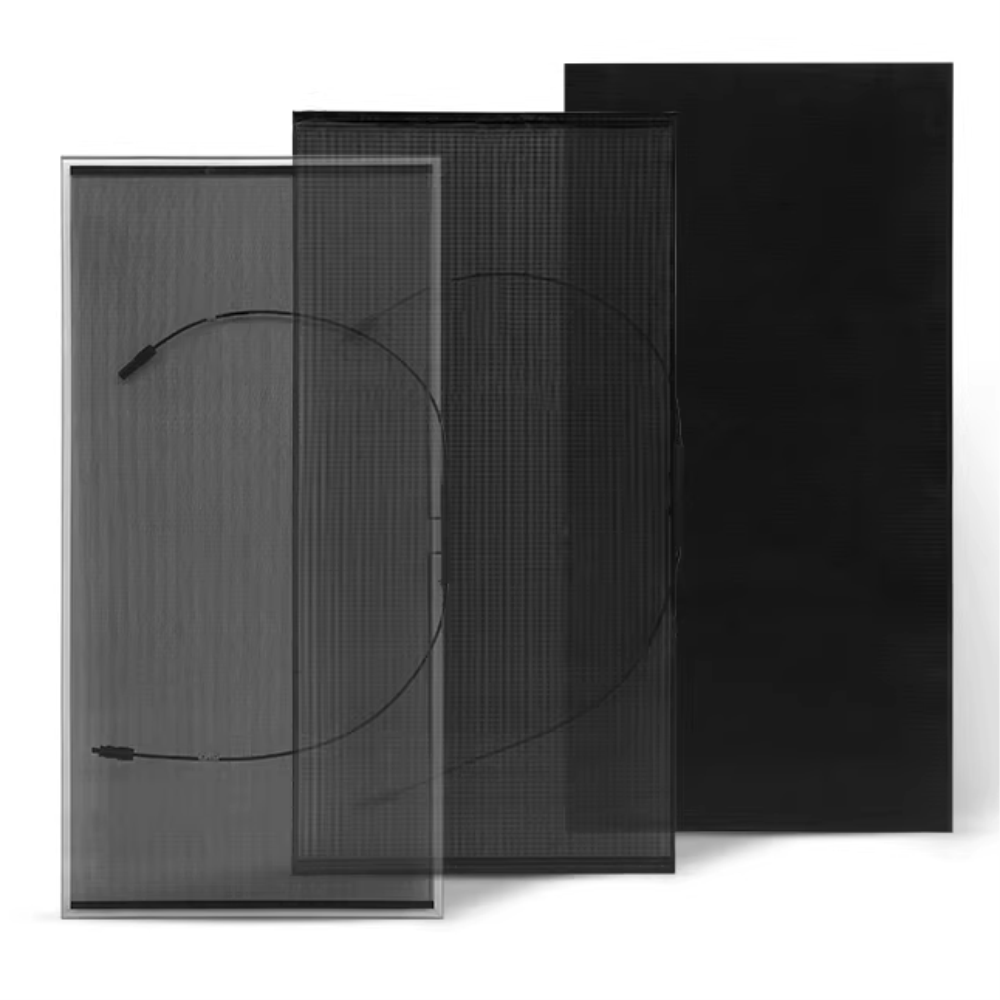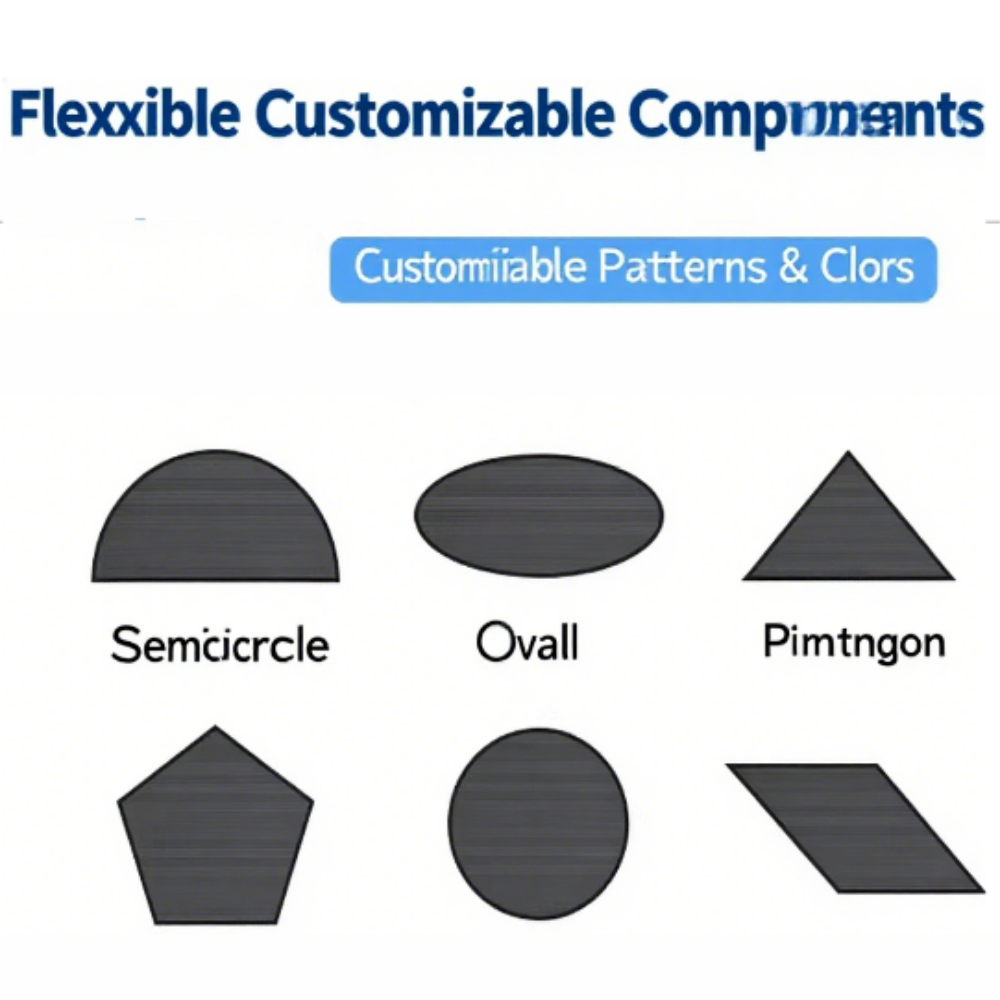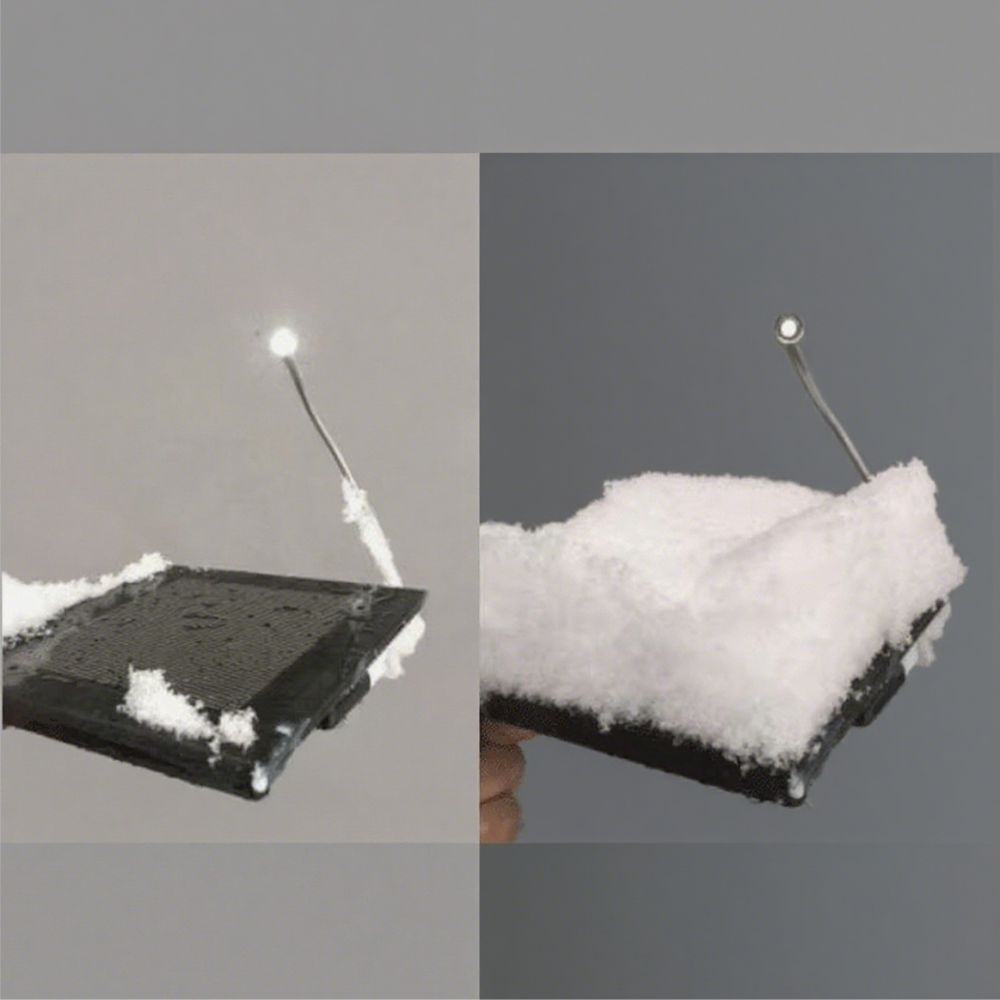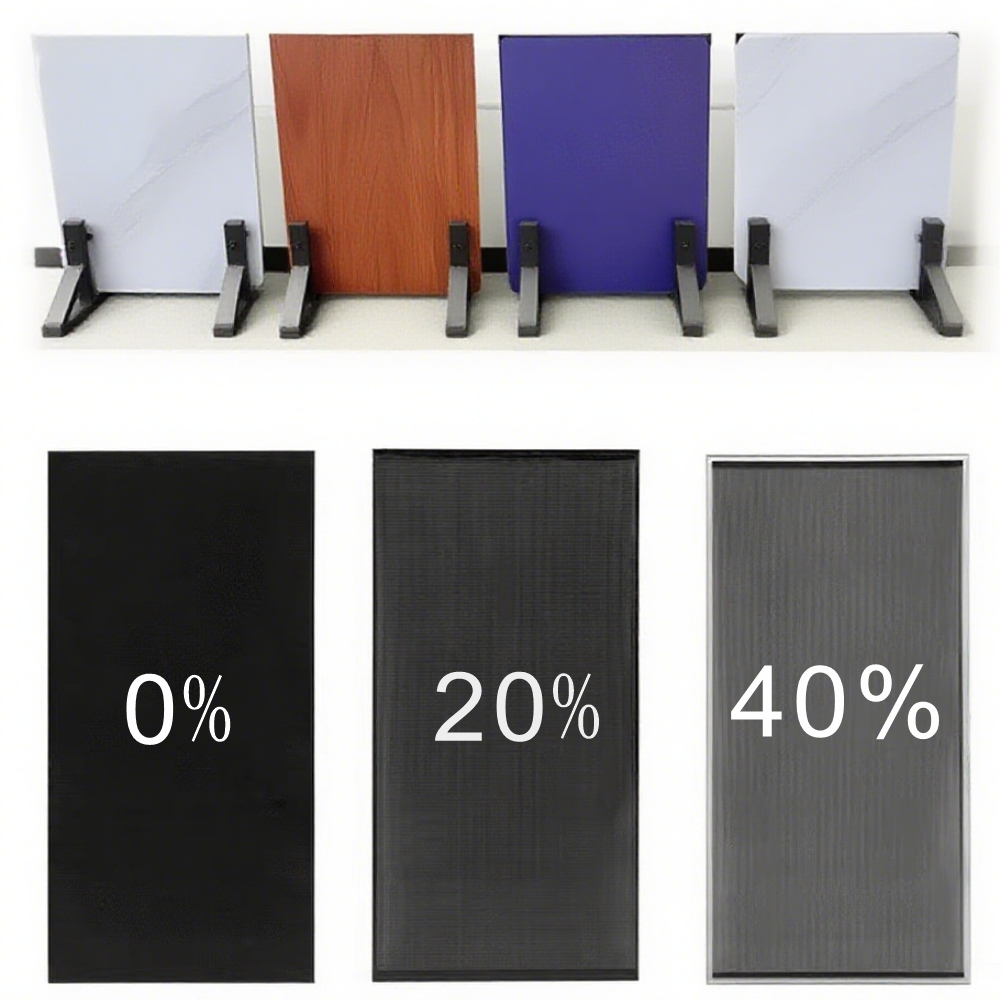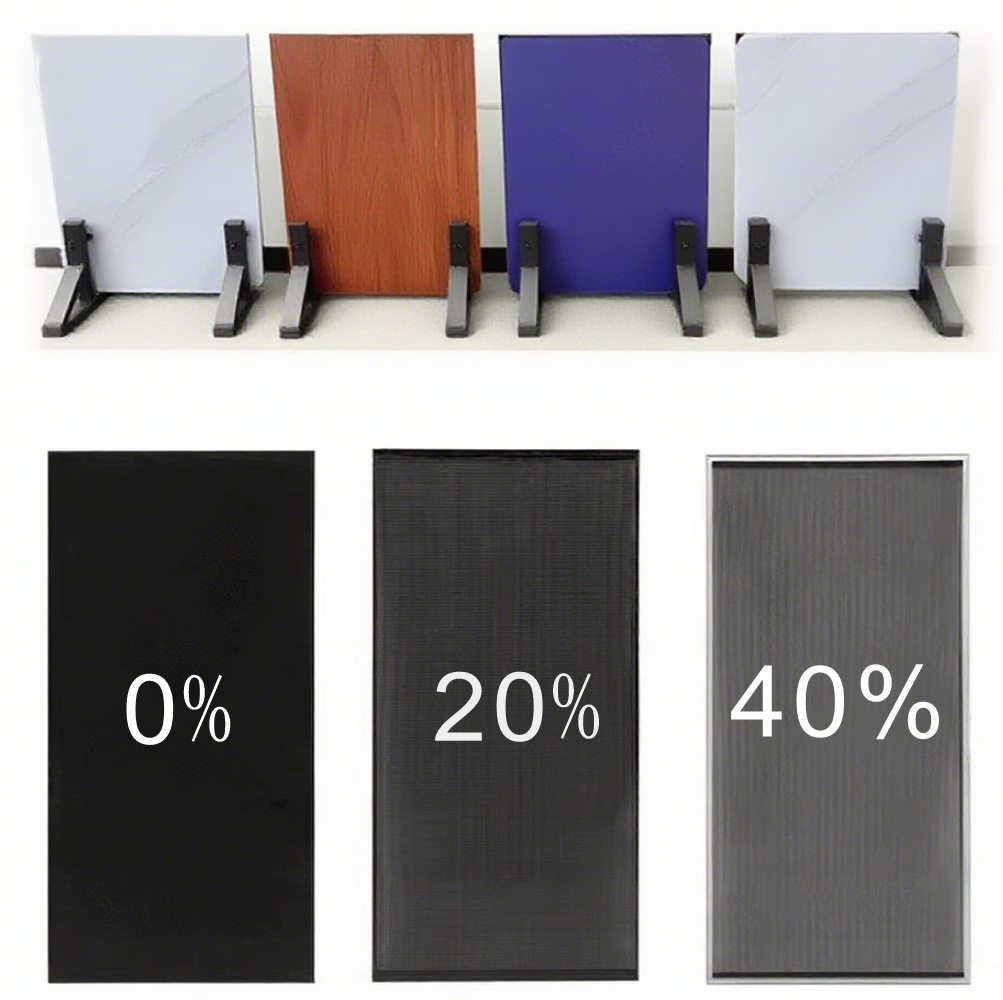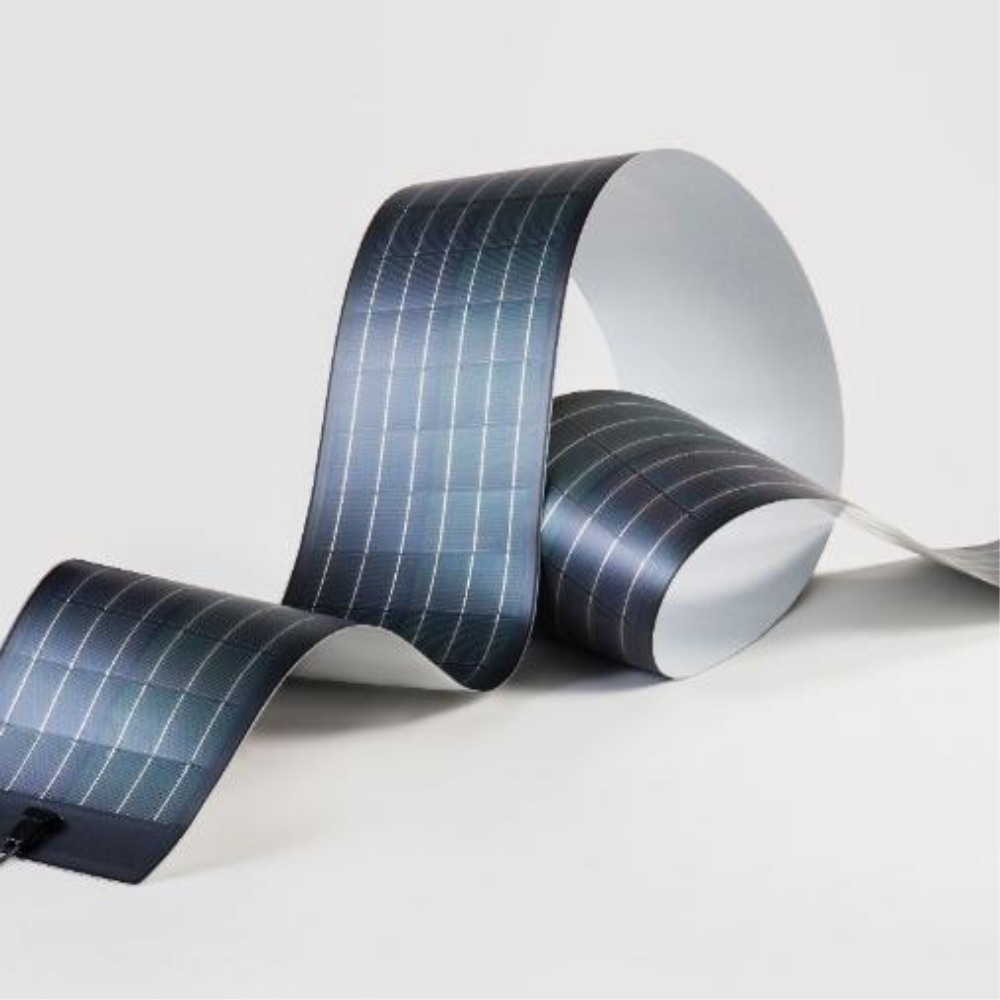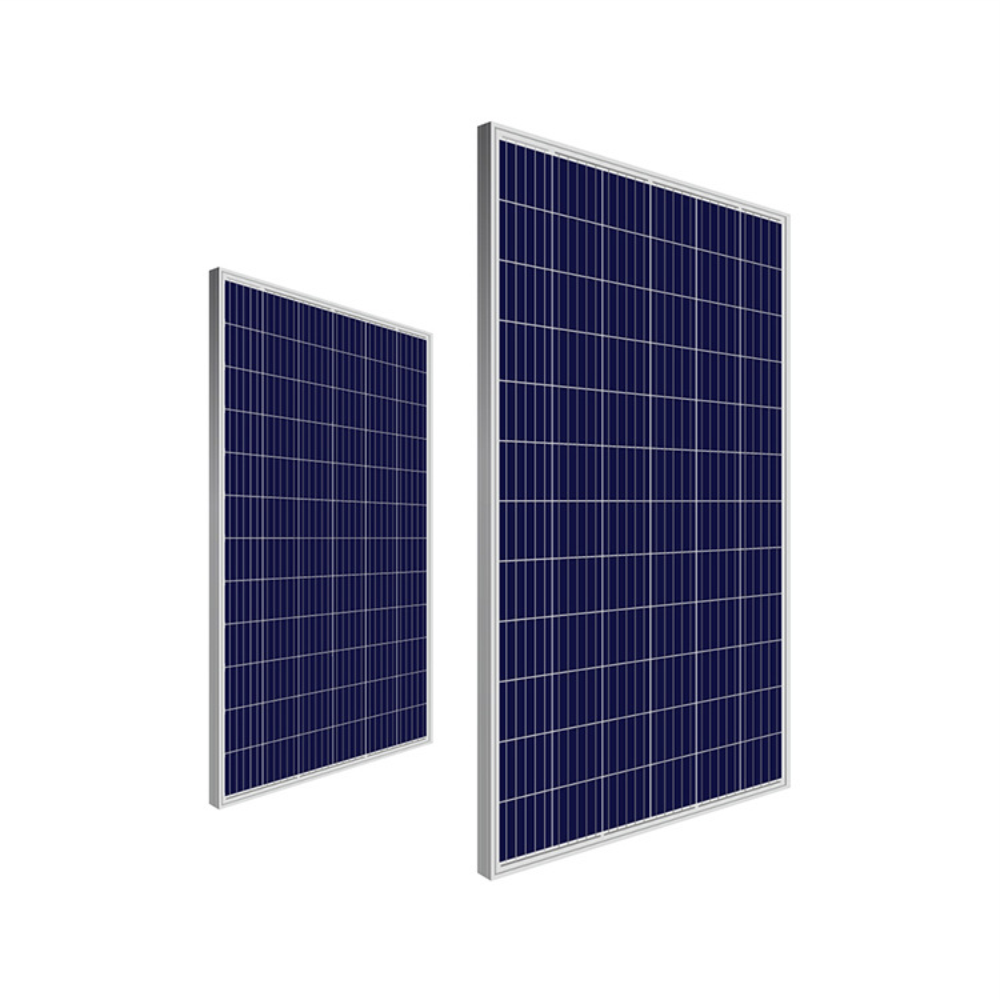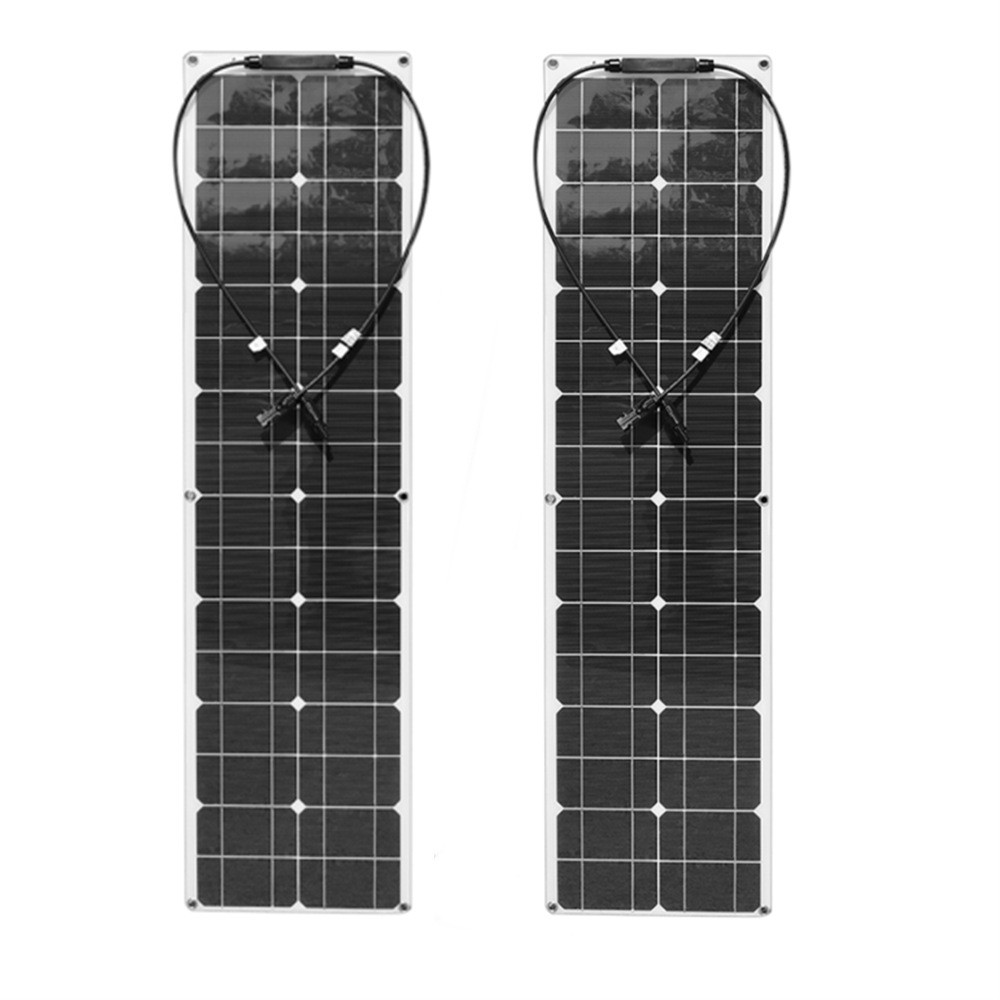Click to open expanded view
Cadmium telluride photovoltaic panel
dimensions:L1200*W600*D6.8mm
Weight:12kg
Power temperature coefficient:-0.214%/°C
voltage temperature coefficient:-0.321%/°C
Current temperature coefficient:0.060%/°C
Output power guarantee:10-year warranty on product craftsmanship and materials;
25-year warranty on output power.
Test conditions:STC:1000W/m²,AM1.5,25°C
Cadmium telluride photovoltaic panel
Cadmium telluride photovoltaic panels can achieve different levels of light transmittance through precise control of laser etching or chemical/physical film removal processes. Light transmittance is inversely proportional to power generation efficiency, meaning that higher light transmittance results in lower power generation efficiency, and vice versa. Taking QIN Technology's cadmium telluride power-generating glass, which is commonly available on the market, as an example, the characteristics of products with different light transmittance levels are as follows:
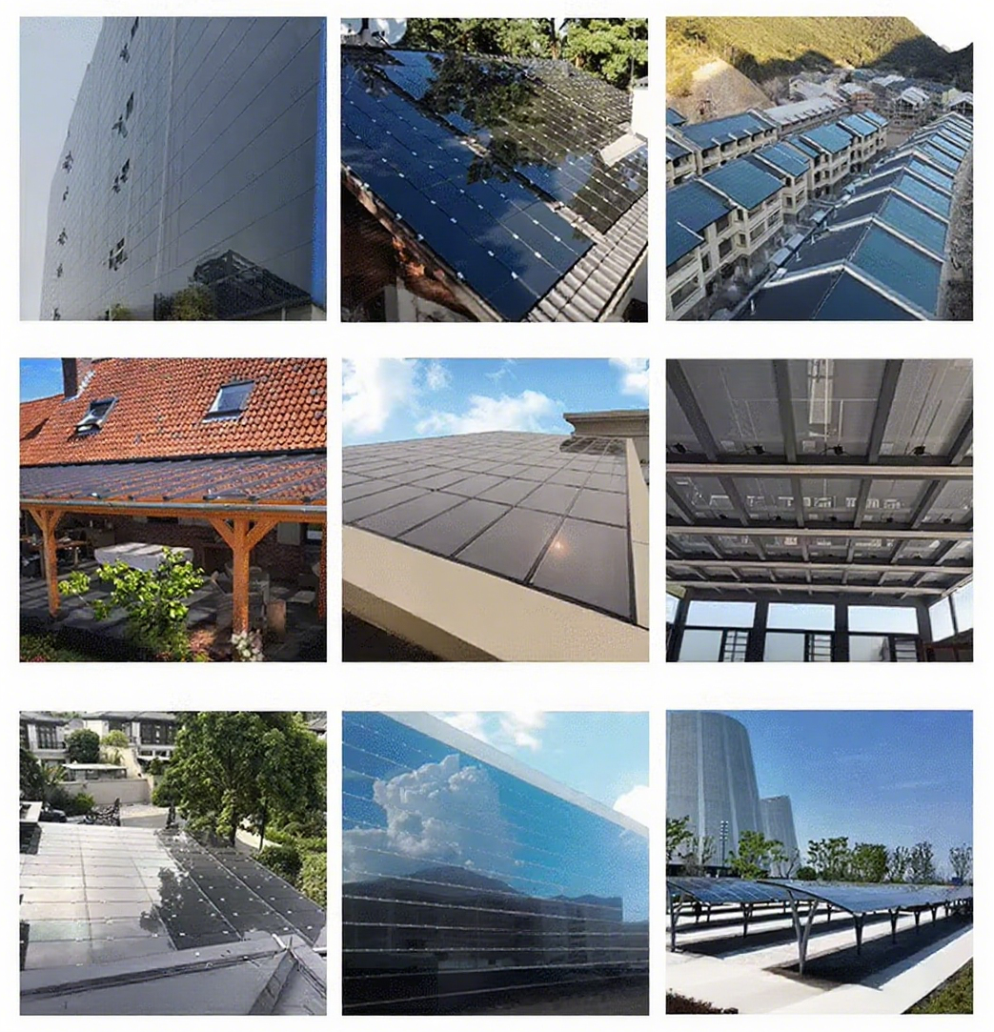
0% light transmittance: Highest power generation efficiency, relatively highest power per square meter for the same area, and lowest cost. However, the disadvantage is a lack of natural light, resulting in a relatively dark indoor environment. It is suitable for locations where natural light is not required, such as roofs and walls that do not require natural light.
20% light transmittance: This option strikes a good balance between power generation (approximately 115W/㎡), natural lighting experience, and thermal insulation and energy efficiency. It can meet certain indoor lighting requirements and enhance spatial comfort while ensuring a certain level of power generation capacity. This makes it a suitable choice for most scenarios that require a balance between functionality and comfort, such as sunrooms, skylights, and walkways.
40% light transmittance: The main advantages are high light transmittance and aesthetic appeal, making it suitable for scenarios with high lighting requirements and a desire for transparency in building exteriors, such as facade curtain walls and high-lighting roofs. However, its power generation efficiency is the lowest among the three options.
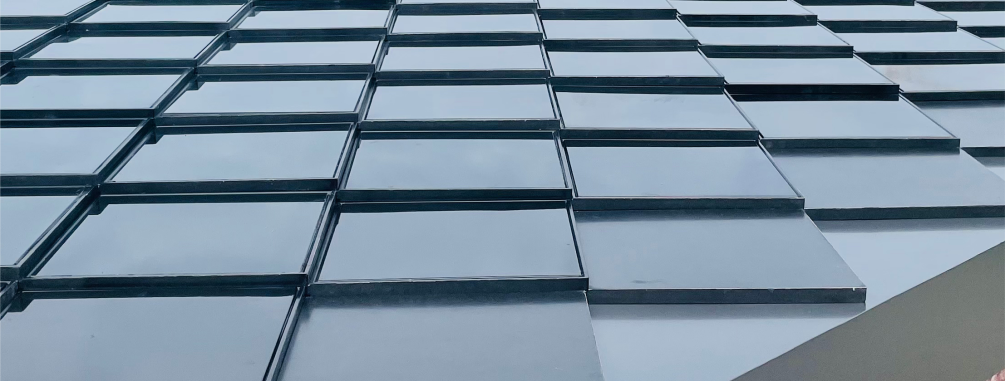
Cadmium Telluride Photovoltaic Panel Product Advantages
Power Generation Performance Advantages:
Strong Low-Light Power Generation Capability: Cadmium telluride is a direct bandgap material with excellent full-spectrum absorption. In low-light environments such as early morning, evening, and cloudy or rainy days, its power generation efficiency is higher than that of crystalline silicon, with a lower startup voltage, enabling power generation to begin over an hour earlier. In rainy conditions with low light intensity, crystalline silicon photovoltaic conversion efficiency is low or even unable to generate electricity normally, while cadmium telluride can achieve “power generation whenever there is light.”
Stable Power Generation at High Temperatures: Low temperature coefficient. For example, the temperature coefficient of cadmium telluride power generation glass produced by Zhongmao Green Energy Technology is approximately -0.19%/°C, while the temperature coefficient of crystalline silicon cells is approximately -0.45%/°C. This means that in high-temperature environments, cadmium telluride photovoltaic panels experience minimal power loss and do not suffer significant efficiency degradation due to rising environmental or component temperatures, resulting in average power generation that exceeds that of crystalline silicon.
Low degradation rate: The annual degradation rate of cadmium telluride photovoltaic modules is 0.5%, meaning that after 30 years, the module retains over 85% of its original power generation capacity.
Minimal hotspot effect: Cadmium telluride thin-film modules feature a long-strip cell design (vertical line design), which minimizes power loss under partial shading conditions. This enhances power generation capacity while improving product lifespan and safety.
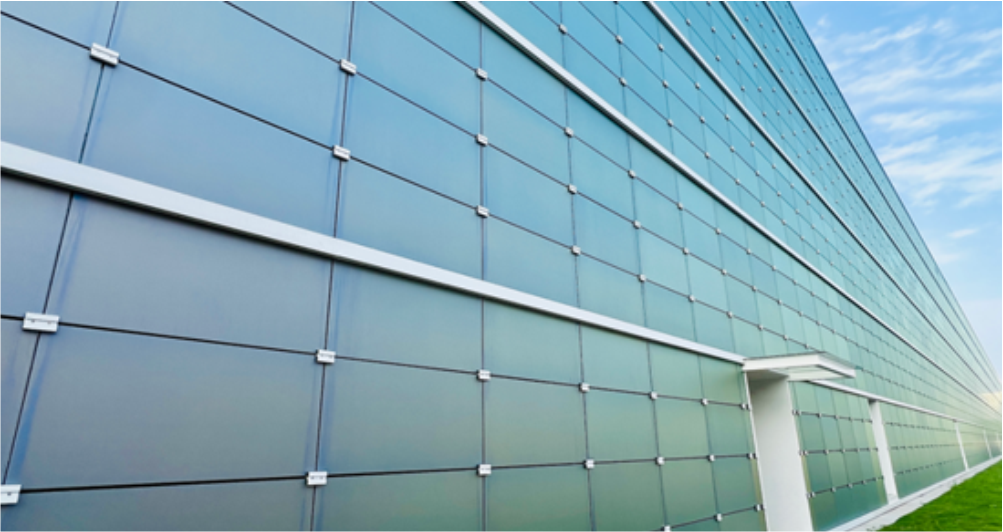
Architectural Compatibility and Aesthetic Advantages
Wide range of adjustable light transmittance: The light transmittance can be flexibly adjusted according to the building's lighting requirements, design style, and application scenarios, balancing power generation efficiency while ensuring the building's transparency, perfectly accommodating both building lighting and power generation needs.
Aesthetic Appeal: Uniform color and an elegant appearance, with the ability to create diverse visual effects tailored to specific scenarios. Additionally, micro-textured surface treatment technology can be applied to effectively suppress mirror-like reflections, eliminating glare hazards at the source. Furthermore, colors, patterns, shapes, and sizes can be customized to meet diverse requirements, seamlessly replacing traditional building materials and fulfilling personalized architectural design needs.
Flexible installation: Lightweight, suitable for installation on various building structures, especially in renovation projects of older buildings with load requirements; it can also adapt to complex building shapes, better aligning with architectural aesthetic needs, and demonstrates significant advantages in the Building-Integrated Photovoltaic (BIPV) field.
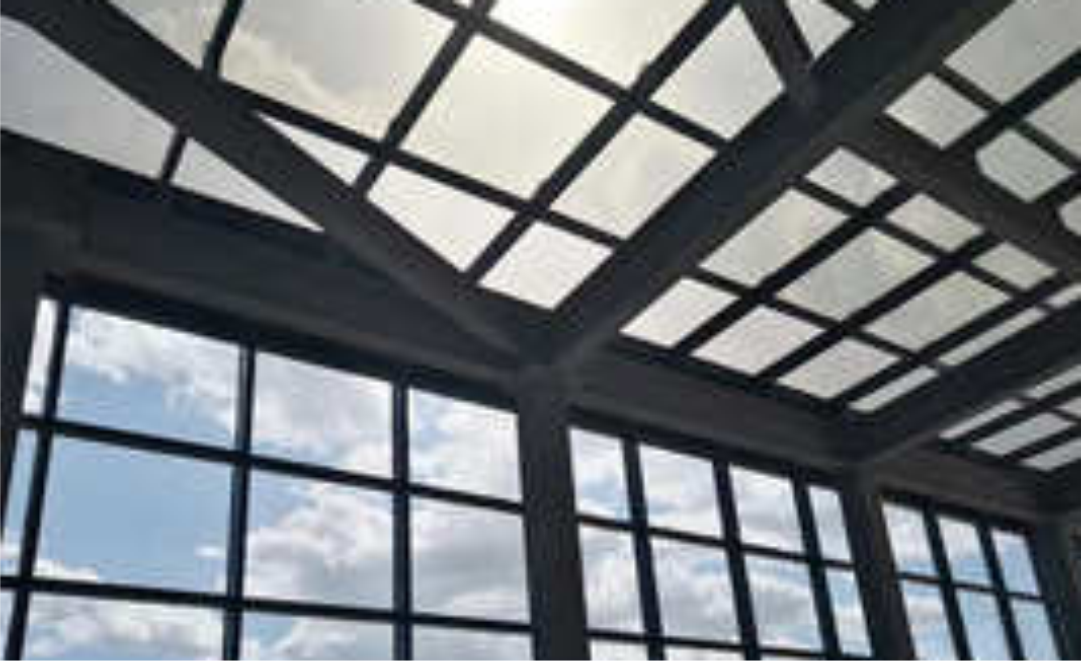
Environmental and Sustainable Development Advantages
Low energy consumption in production: Compared to crystalline silicon modules, cadmium telluride production reduces energy consumption by 50% and carbon emissions by 30%. Using a low-temperature process, production temperatures require only 300–500°C (crystalline silicon requires over 1,400°C), significantly reducing energy consumption.
High Material Recyclability: Over 90% of the glass and over 95% of the semiconductor materials in cadmium telluride thin-film photovoltaic modules can be reused, achieving a closed-loop recycling rate of up to 98%. Proprietary recycling technology can separate and recover 95% of tellurium and 99% of cadmium, with a purity of 99.99%, enhancing material utilization and reducing environmental pollution.
Low carbon footprint: Over its lifecycle, the carbon footprint of cadmium telluride thin-film photovoltaic modules is 2.5 times lower than that of crystalline silicon modules, and the water footprint is 3 times lower.
Raw material utilization advantages: Mining waste tailings can be upgraded and repurposed for production. The primary raw materials, tellurium and cadmium, can be obtained from copper and lead-containing ores, zinc ores, sapphire, silver ores, and waste materials from zinc selenate batteries, achieving rational resource utilization.
Low pollution index: According to studies by relevant U.S. agencies, cadmium telluride solar modules have the lowest cadmium pollution index throughout their entire lifecycle, with an index of just 0.3, equivalent to that of natural gas.
Easy maintenance: The surface of cadmium telluride solar modules is made of float glass, which is smooth and flat, making it less prone to dust accumulation and easier to clean and maintain.
Standard Thin Film Module ASP-S1/S4 | |||||
Product Model ASP-S1-100 ASP-S1-105 ASP-S1-110 ASP-S1-115 ASP-S4-85 | |||||
Rated power (Pm) | 100W | 105W | 110W | 115W | 85W |
Open-circuit voltage (Voc) | 123.5V | 124.0V | 124.5V | 124.5V | 29.2V |
Short-circuit current (sc) | 1.24A | 1.28A | 1.30A | 1.32A | 4.19A |
Working voltage (Vm) | 91.7V | 92.9V | 94.0V | 95.1V | 23V |
Working current (Im) | 1.09A | 1.13A | 1.17A | 1.21A | 3.71A |
dimensions | L1200*W600*D6.8mm | ||||
Weight | 12kg | ||||
| Power temperature coefficient | -0.214%/°C | ||||
| voltage temperature coefficient | -0.321%/°C | ||||
| Current temperature coefficient | 0.060%/°C | ||||
| Output power guarantee | 10-year warranty on product craftsmanship and materials; 25-year warranty on output power. | ||||
Test conditions | STC:1000W/m²,AM1.5,25°C | ||||
